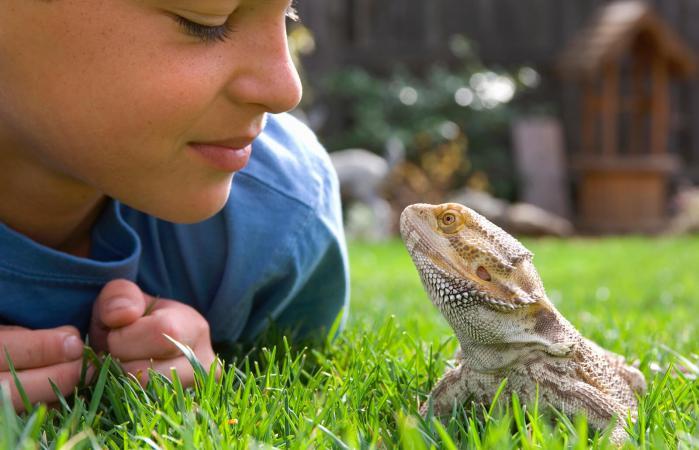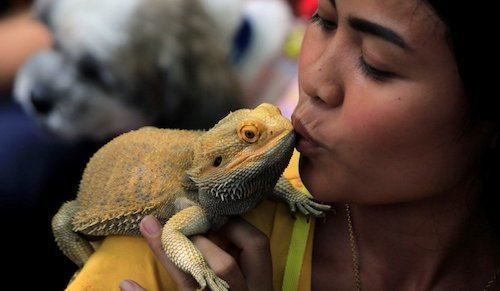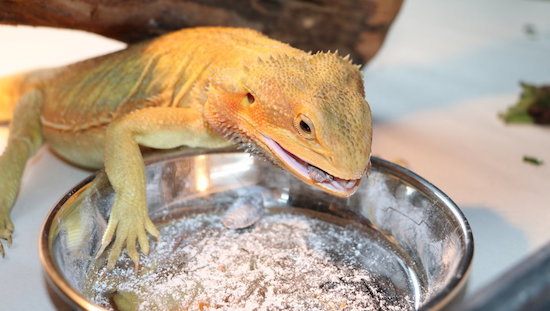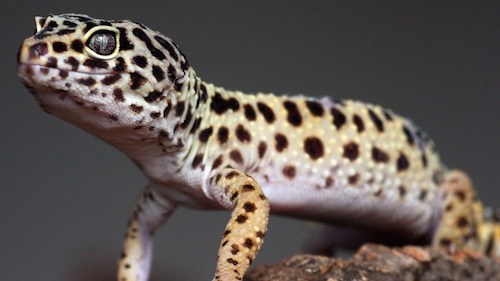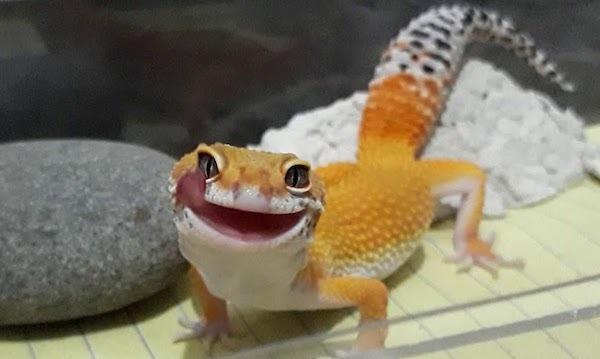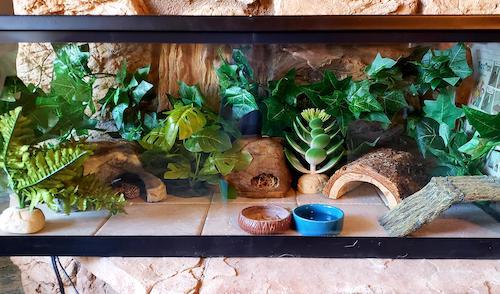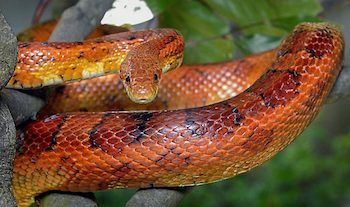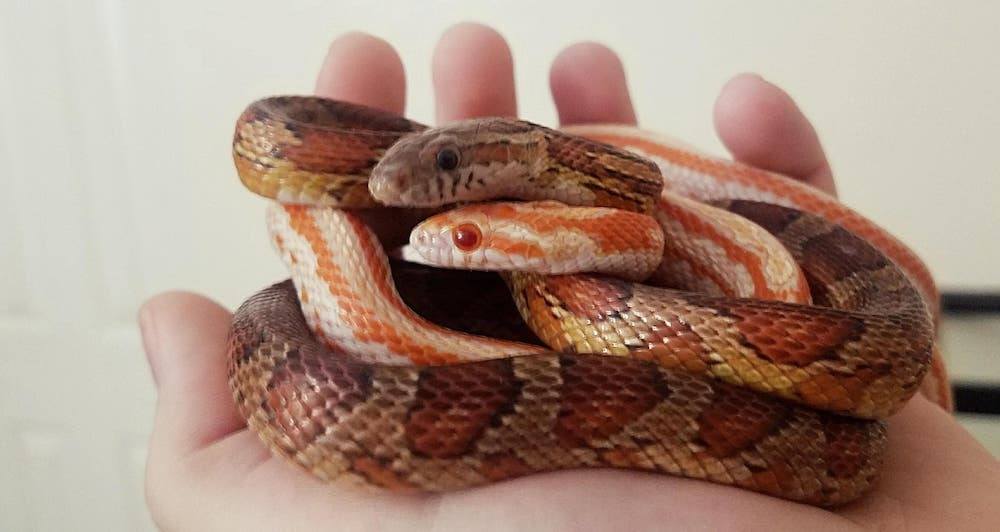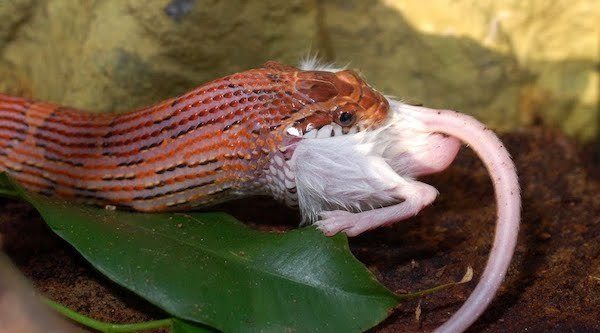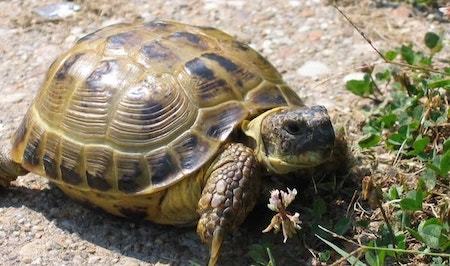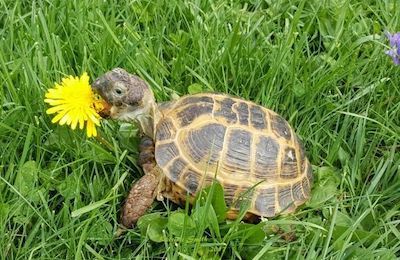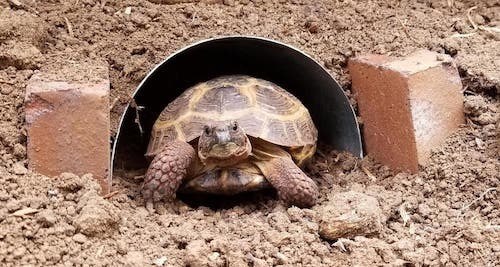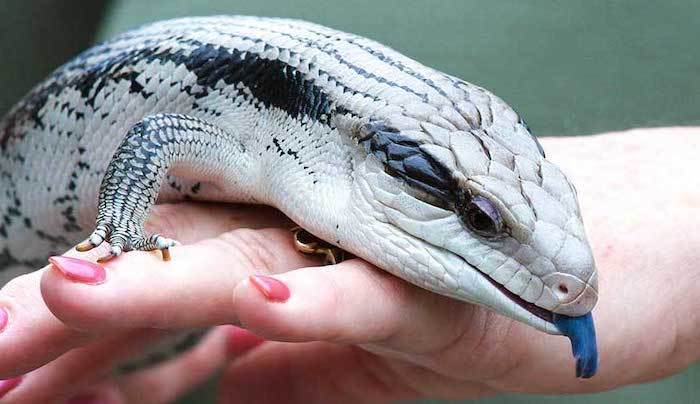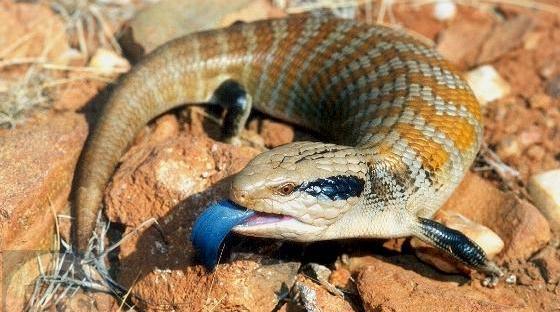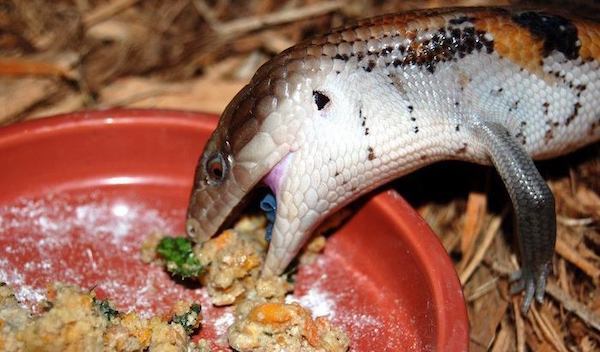So, in your hunt for a new pet you’ve chosen (or perhaps are at least considering) adding a new scaly friend into the mix. And regardless of whether you’re looking for suggestions on the best pet reptiles for beginners or the best pet reptiles kids in general, you’ve come to the right place.
You see, as a self-proclaimed “Reptile Lady” I’ve got decades of experience with many different breeds of reptiles, not to mention a bevy of knowledge on even more. If I haven’t owned a specific breed, it’s almost guaranteed I have a friend or colleague who has.
As such, it is my hope to help guide you in this article as you search for the easiest reptile to take care of, both for a beginner or a child.
However, please understand that while I do possess many years of experience with reptiles, every situation, pet, and owner will be different. What might have worked out wonderfully for me or another new reptile owners might not work out so well for you and vice versa.
Because of this, I highly encourage you to use YOUR best judgment in finding the best reptile to fit your lifestyle, family, and so on.
Alright, with that being said… let’s dive straight into discussing the best (and worst) reptiles for beginners and children alike!
Note: Feel free to use the Quick Navigation guide below to be taken to a specific section or species!
In This Article
The Best Reptile Pets for Beginners and Kids
Regardless of whether you’re allergic to feathers or fur, confined to a small space, or are simply intrigued by reptiles, the following suggestions are great for both new reptile owners who possess little to no previous experience and children.
Bearded Dragons
Perhaps the all-around best reptile pet, the Bearded Dragon makes an incredible pet for first-time reptile owners and children alike for so many reasons!
First and foremost, they tend to be incredibly social, easy-to-handle, and friendly. In fact, Bearded Dragons have been known to properly enjoy their time out of the tank with their owners and can often be found falling asleep curled up on top or next to their favorite humans.
Bearded Dragons tend to be very friendly and easy-going reptiles who become very comfortable with their owner(s). In fact, some even enjoy outings such as car rides and will happily ride on shoulders.
If kept healthy, bearded dragons typically live anywhere from 8 to 12 years, with anything more being on the rare side. This is important to consider for those who anticipate a child caretaker moving out and going to college within that timeframe as most dorms will not permit pets.
If your child will likely live in a dorm at some point while you have the bearded dragon and you don’t want to take over as the caretaker, I’d recommend considering a different reptile with a shorter lifespan.
Also, if you prefer smaller reptiles, the bearded dragon is probably not idea for you considering they can grow up to 24 inches long, with most averaging around 18 inches.
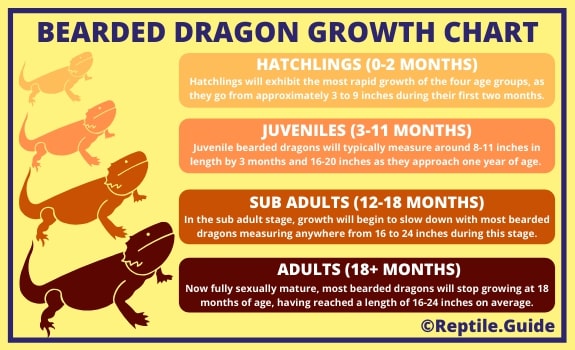
Despite the initial cost of purchasing the right tanks (you’ll need to start small and then transition to a bigger tank as babies grow up) and setting everything up, bearded dragons over time prove to be very cost efficient.
If you provide them with the right setup, you can expect to spend anywhere from $50 to $300 on average.
Again, this will depend on the type of deal you get on the tank or if you want to go all out and splurge on a really large, fancy one.
However, once they are an adult/full grown, this initial investment will last the rest of their lifetime, save the exception of needing to occasionally replace basking bulbs (you can use cheap white light house bulbs) and UVB bulbs (Typically $20-$50).
And when it comes to their diet? You can typically expect to spend anywhere from $25 to $60 on the high end on food per month. This will include their insects, veggies, calcium powder, and vitamins.
Now, perhaps the main drawback (if I’m being really picky) about a bearded dragon is that they can be a little needy in terms of level of care.
While missing an occasional meal isn’t too big of a deal, they do need to eat daily and many will also enjoy coming out of their tanks for daily engagement as well.
Also, Bearded Dragons need very specific temperature and lighting conditions and can fall terribly ill if your tank isn’t properly set up.
They also can suffer from health concerns like impaction and Metabolic Bone Disease very easily if you feed them the wrong food, don’t offer supplements, or their lighting and temps aren’t accurate.
However, overall if you are willing to take the time to do your homework (which you should do before adopting ANY pet!) and cough up a small investment for the right tank setup…
Bearded Dragons are among the most popular reptile pets that can provide years of companionship for any family or reptile newbie.
Leopard Geckos
Probably one of the more popular if not the most popular of all reptile pets, the Leopard Gecko earned its spot on this best reptile pets list for many, many reasons.
Essentially, the Leopard Gecko wins points for being affordable, easy to handle, low maintenance reptiles to care for, and amusing.
Hailing from the desert climate of the Middle East and Western India, the Leopard Gecko is a striking breed of Gecko renowned for its unique features not commonly found on other gecko breeds.
Unique from other species of gecko, the Leopard Gecko has eyelids yet lacks sticky toe pads… meaning they tend to be less jumpy than other species of gecko.
Because of this, you won’t see Leopard Geckos cleaning their eyelids in the same way other geckos do, nor will you see them vertically climbing.
In terms of size and life expectancy, you can expect your Leopard Gecko to grow to be 8 to 12 inches long and live up to 20 years, and as such, you should think long and hard about the amount of care you will need to extend to the animal should they live this long.
Because these geckos are not really jumpers, this can make them seem less skiddish than other geckos, such as the also very popular Crested Gecko.
As you might suspect, Leopard Geckos are also pretty docile and are very easy to handle (unlike e.g. Tokay Geckos), so long as you keep a hand under them so they don’t fall. This makes them a great choice for those with children.
When it comes to price, Leopard Geckos are very affordable in regard to costs associated with their diet, habitat, and the like. Setting up a habitat in the beginning will cost you anywhere from $50 to $100 or so.
Unless you have a baby and opt for a small tank to start, this setup is typically a one-time investment.
Although an initial investment towards an adult sized Leopard Gecko might strike you as expensive, consider the fact that it’s a one time investment.
Because they don’t need to eat every day and can survive on cheap feeders like crickets, you can expect to spend just a couple dollars a week, if even that.
Additionally, because Leopard Geckos eat a diet primarily of live feeders (AKA insects), many people find it highly entertaining to feed them and watch them hunt.
In terms of time and level of care, Leopard Geckos also require less daily care, which means they are more low maintenance reptiles. They don’t have to eat every day and can get adequate water simply from their water bowl.
So, if you like to take frequent weekend trips or stay the night at a friend’s or partner’s house, you wont need to come rushing home to feed your gecko.
Corn Snake
A native species to the Southeastern United States, the Corn Snake makes a wonderful choice for those new to reptiles or children because of their mild temperament and ease to care for.
Available in a wide variety of beautiful morphs, many people enjoy owning a Corn Snake because of their unique skins and patterns. Relatively thin bodied, these snakes tend to grow to be around 5 feet long and live on average around 15 years, with some living as long as 20.
Yet despite their size, adult Corn Snakes can function just fine in a 30 gallon tank, although 40 gallons would be preferred. Native to the Northeastern United States, the medium sized Corn Snake comes in a wide variety of beautiful morphs.
And when it comes to setting up the environment? Well, the corn snake is just about one of the easiest reptiles to cater to when it comes to habitat!
Once you have a good escape-proof tank (I recommend a screened top), you really just need substrate, a reliable heat source, a water dish, a hide, and some décor.
Ideally, you would supply a source of UV light as well (such as with a regular old household bulb), but this isn’t entirely necessary. If your snake receives a great natural source of daylight, then consider yourself in the clear.
If not, you may want to consider mounting a light above the cage, this really does wonders for their health.
If you are looking for a reptile that is super easy to care for and can be left to tend to itself for days on end, look no further. Adult Corn Snakes only require feeding about once a week, while babies should be fed several times.
This means that once your Corn Snake is fully grown, you can easily go out of town on the weekends or even take an extended vacation without neglecting your snake.
The low maintenance Corn Snake is a great pet to have for those who like to take trips or frequent vacations because they only need to eat once a week.
Should you be gone longer than a week, simply try to persuade a family member or friend to come over and feed your snake once and clean their water. This really just takes about 5 minutes.
Naturally, the most difficult aspect about caring for your snake while away on a longer vacation will simply be finding someone who isn’t scared of snakes (or dead rodents)!
Now in terms of health issues, Corn Snakes are prone to issues like infections in the mouth and upper respiratory infections. Luckily, virtually all health issues can be avoided by simply providing your snake with the proper habitat.
So with all of this being said, if you want a low maintenance reptile that doesn’t require a ton of daily care, is easy to handle, and will remain around for some time, the Corn Snake is definitely for you!
For a more in-depth discussion about which species suit beginner snake owners, check out our corn snakes vs. ball pythons comparison.
Russian Tortoise
If you’re looking for a pet that will be in the family for generations (No, seriously… I’m talking up to 50 years) and stays relatively small with low maintenance habit requirements, then the Russian Tortoise may just be for you!
Related: 10 Best Pet Tortoise Species for Beginners (With Pictures!)
Originating from Central Asia, many Russian Tortoises are imported to meet the demands of pet stores that may or may not take the best care of them.
If you are going to purchase this pet from a pet store, it is most likely that your tortoise was imported and caught in the wild.
As with any animal, you’ll want to do your due diligence and inspect the animal before adoption and inquire about its bill of health and previous care.
Identifiable by their 4 toes and relatively small size, these reptiles are feisty and more interactive than other breeds of tortoise. They’re also relatively hardy and can survive extreme heat and even lows in the 20 degrees Fahrenheit.
Because of this, many people who prioritize resiliency, low maintenance reptile pets with noticeable personalities will opt for this breed of tortoise over others.
When it comes to diet, you’ll want to opt for a diet rich in fibrous leafy greens such as leafy greens (think kale, collard greens, spinach, etc.) and avoid breads and sugary foods (like fruit) at all costs.
Your tortoise will also enjoy munching on weeds like dandelions as well as flowers like roses and hibiscus, just make sure they’e pesticide and herbicide free.
For their habitat, your tortoise will thrive in an enclosure that is at least 5 square feet (but, ideally bigger) with a mixed substrate (think dirt and sand) to provide plenty of traction and keep them from sinking.
You’ll also want to provide them with some nice flat rocks for keeping their nails trimmed and serving them food on.
Surprisingly, they enjoy climbing, so if you can give them the ability to do so without putting them up too high or risking an escape from the enclosure, go for it!
It is important to bear in mind that these reptiles are burrowers, so if kept outside you will absolutely need to make sure the enclosure walls reach at minimum 6 inches below ground to keep them from digging their way out.
I personally recommend upwards of 10 inches. When the temperature rises or falls, you’ll likely find your tortoise trying to escape by digging themselves a hide. You can dig them a hide box to use as a safer alternative.
When it comes to a clean bill of health, your best bet, as with any reptile, is ensuring your tortoise has a suitable environment that allows them to remain dry.
As they are prone to respiratory infections, too much moisture can prove dangerous. Also, since most tortoises are captured in the wild, they will have some level of parasites within them.
A fecal sample at the vet will give you a clear picture of their health upon adoption.
Blue Tongue Skink
Equally easy to handle and take care of, the Blue Tongue Skink makes a great reptile for beginners and children alike! It’s friendly demeanor and curious nature make it a joy to watch and interact with.
Living on average 15 to 20 years (up to 30 years in rare instances!), you should be prepared to commit to your skink the same way you would a kitten as they will likely be around for quite some time.
There are 10 different subspecies of Skink, all of which sport a berry-blue tongue. The care between different subspecies will vary slightly, so it is important to know which you have.
Because the Northern Blue Tongue Skink (which are typically captive bred) and Indonesian Blue Tongue Skins (typically imported/caught) tend to be the most popular and accessible, we will focus on discussing them for the remainder of this article.
However, it is important to note that much of the following information will be pertinent regardless of what subspecies you have.
You can expect your skink to be around 24 inches long, give or take. With their large body and stubby legs, these lizards are easy to handle, hardy, and slow moving.
When it comes to their habitat, for an adult, you’re going to want something at least 75 gallons, but ideally 100… if not larger! Many pet stores will tell you that you need a 40 gallon breeder tank, but do NOT go this route as these tanks can end up being only inches longer than your full grown skink.
For Indonesians, you’ll want a higher humidity levels around 60-80%, where a Northern will want 30-40%. This will of course affect your substrate because you may need something that holds humidity. Not sure what to use? Try Cypress Mulch as it will work fine for either subspecies.
You can of course mist and wet the substrate, but this may prove too demanding for many owners, especially those who are gone for most of the day due to work and/or a long commute.
You’ll also want to provide your blue tongue skink with several inches worth of substrate so they can burrow themselves in it.
Due to their curious nature, you’ll want to include plenty of decor items to provide enrichment for your skink. Especially responsible owners will regularly switch out decor every once in awhile as well.
Much like a bearded dragon, you’ll want a warm side and a cool side of the tank, with a regular basking bulb above one side of the tank. Indonesians will prefer 100-110 degrees to bask in, whereas Northerns will prefer 90-100 degrees Fahrenheit.
Keep the cool side at least 10 degrees and up to 20 degrees cooler.
However, unlike bearded dragons… Blue Tongue Skinks have a pretty interesting diet. They’re omnivores, meaning they will eat both meat and vegetation. For adults opt for 40% protein, 50% veggies, and 10% fruit.
Surprisingly, one of the best options for your skink is wet cat or dog food! Opt for premium brands without corn, grain, and fillers. Dog food will work best for healthy skinks, whereas those that are malnourished will benefit from protein dense cat food.
You can also give them hard boiled eggs, shredded boiled chicken, cooked ground turkey and beef, and most fruits and veggies with the exception of citrus, avocados, eggplant, and high sodium foods. A shallow water bowl should also be included for clean drinking water.
Feed your adult every 2-3 days and your juvenile every other day as much as they’ll eat at a single time.
Many Skink enthusiasts will tell you that these hardy lizards tend to be easier to care for and are less prone to illness than others, which makes them a great choice for beginners.
However, problems such as mouth rot, parasites, dehydration, and uncomfortably long nails can happen, amongst others. Your best bet at avoiding these problems, as always, is to keep your skink’s habitat and diet on point.
Provide flat rocks to help file claws as they walk, a varied and nutrient dense diet, a clean source of water, and regular vet checkups.
Overall though? You should expect a lively and intelligent creature whose curious nature and ease of handling will provide countless hours of joy and entertainment for you and your family!
In Conclusion
Regardless of whether you’re a first time reptile owner or are looking to find an easy-to-care for pet for your child, these 5 reptiles should prove to be great additions to your family dynamic!
Read These Articles Yet…?
Why Bearded Dragons Make Great Pets
